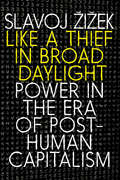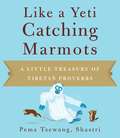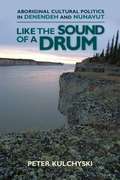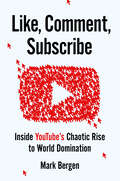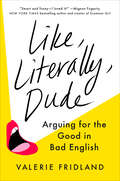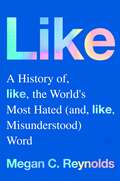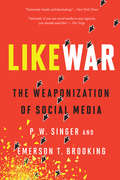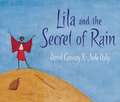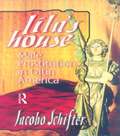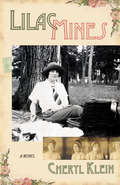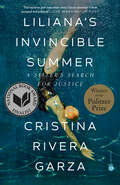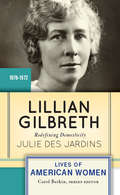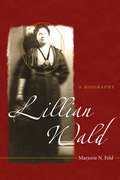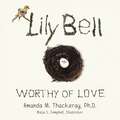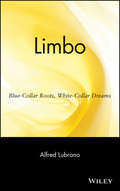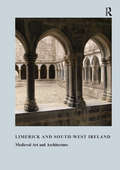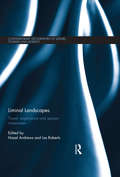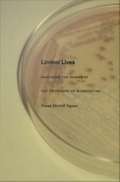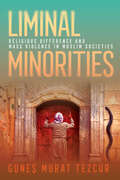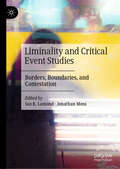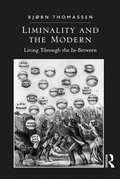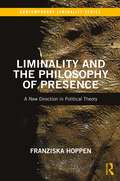- Table View
- List View
Like a Thief in Broad Daylight: Power in the Era of Post-Human Capitalism
by Slavoj ZizekThe latest book from "the most despicable philosopher in the West" (New Republic) considers the new dangers and radical possibilities set in motion by advances in Big Tech.In recent years, techno-scientific progress has started to utterly transform our world--changing it almost beyond recognition. In this extraordinary new book, renowned philosopher Slavoj Žižek turns to look at the brave new world of Big Tech, revealing how, with each new wave of innovation, we find ourselves moving closer and closer to a bizarrely literal realization of Marx's prediction that "all that is solid melts into air." With the automation of work, the virtualization of money, the dissipation of class communities, and the rise of immaterial, intellectual labor, the global capitalist edifice is beginning to crumble, more quickly than ever before--and it is now on the verge of vanishing entirely.But what will come next? Against a backdrop of constant socio-technological upheaval, how could any kind of authentic change take place? In such a context, Žižek argues, there can be no great social triumph--because lasting revolution has already come into the scene, like a thief in broad daylight, stealing into sight right before our very eyes. What we must do now is wake up and see it. Urgent as ever, Like a Thief in Broad Daylight illuminates the new dangers as well as the radical possibilities thrown up by today's technological and scientific advances, and their electrifying implications for us all.
Like a Virgin: How Science is Redesigning the Rules of Sex
by Aarathi PrasadMost cultures tell the tale of a maiden who gives birth untouched by a man. Is this just a myth, or could virgin birth become the way we make babies in the future? In Like a Virgin, biologist Aarathi Prasad explores inconceivable ideas about conception, from the "Jesus Christ" lizard's ability to self-reproduce (it walks on water, too) to the hunt for a real-life virgin mother among geneticists in the 1950s. Prasad then transports us to the maverick laboratories that today are inventing the equivalent of "non-sexual selection", from egg-fertilizing computer chips to artificial wombs for men. This adventurous romp to the frontiers of reproductive science will forever change the way you think about sex and parenthood. Aarathi Prasad is a biologist and science writer. She has appeared on television and radio, including as host of the BBC documentary "The Quest for a Virgin Birth," and written for publications such as Wired, New Scientist, and The Guardian. A single mother, she previously worked in research genetics at Imperial College, London. This is her first book.
Like a Yeti Catching Marmots
by Josh Bartok Pema Tsewang ShastriThe Yeti, or Dremo in Tibetan, is a dim-witted mythical beast said to feed only on marmots. It sees a marmot, grabs the hapless creature, and then sits on it - saving the delicious morsel for later. And then the Yeti sees another marmot and leaps up to snatch it while the first marmot makes a quick break for freedom. An image of bumbling, foolish effort. This enchanting little book contains 108 traditional Tibetan proverbs - conveying the wit and wisdom of one of the world's most unique cultures. The proverbs appear in English and Tibetan script, along with a brief explanation of how and when to use each saying. Often funny and wise, these proverbs always remind us of our experiences in a natural and meaningful way.
Like the Sound of a Drum: Aboriginal Cultural Politics in Denendeh and Nunavut
by Peter KulchyskiPart ethnography, part narrative, Like the Sound of a Drum is evocative, confrontational, and poetic. For many years, Peter Kulchyski has travelled to the north, where he has sat in on community meetings, interviewed elders and Aboriginal politicians, and participated in daily life. In Like the Sound of a Drum he looks as three northern communities — Fort Simpson and Fort Good Hope in Denendeh and Pangnirtung in Nunavut — and their strategies for maintaining their political and cultural independence. In the face of overwhelming odds, communities such as these have shown remarkable resources for creative resistance. In the process, they are changing the concept of democracy as it is practised in Canada.
Like, Comment, Subscribe: Inside YouTube's Chaotic Rise to World Domination
by Mark BergenThe gripping inside story of YouTube, the company that upended media, culture, industry, and democracy—by a leading tech journalistAcross the world, people watch more than a billion hours of video on YouTube every day. Every minute, more than five hundred additional hours of footage are uploaded to the site, a technical feat unmatched in the history of computing. YouTube invented the attention economy we all live in today, forever changing how people are entertained, informed, and paid online. Everyone knows YouTube. And yet virtually no one knows how it works.Like, Comment, Subscribe is the first book to reveal the riveting, behind-the-scenes account of YouTube&’s technology and business, detailing how it helped Google, its parent company, achieve unimaginable power, a narrative told through the people who run YouTube and the famous stars born on its stage. It&’s the story of a revolution in media and an industry run amok, how a devotion to a simple idea—let everyone broadcast online and make money doing so—unleashed an outrage and addiction machine that spun out of the company&’s control and forever changed the world.Mark Bergen, a top technology reporter at Bloomberg, might know Google better than any other reporter in Silicon Valley, having broken numerous stories about its successes and scandals. As compelling as the very platform it investigates, Like, Comment, Subscribe is a thrilling, character-driven story of technological and creative ingenuity and the hubris that undermined it.
Like, Literally, Dude: Arguing for the Good in Bad English
by Valerie Fridland&“Smart and funny—I loved it!" —Mignon Fogarty, author of New York Times bestseller Grammar Girl&’s Quick and Dirty Tips for Better WritingA lively linguistic exploration of the speech habits we love to hate—and why our &“like&”s and &“literally&”s actually make us better communicatorsParanoid about the &“ums&” and &“uhs&” that pepper your presentations? Concerned that people notice your vocal fry? Bewildered by &“hella&” or the meteoric rise of &“so&”? What if these features of our speech weren&’t a sign of cultural and linguistic degeneration, but rather, some of the most dynamic and revolutionary tools at our disposal?In Like, Literally, Dude, linguist Valerie Fridland shows how we can re-imagine these forms as exciting new linguistic frontiers rather than our culture&’s impending demise. With delightful irreverence and expertise built over two decades of research, Fridland weaves together history, psychology, science, and laugh-out-loud anecdotes to explain why we speak the way we do today, and how that impacts what our kids may be saying tomorrow. She teaches us that language is both function and fashion, and that though we often blame the young, the female, and the uneducated for its downfall, we should actually thank them for their linguistic ingenuity.By exploring the dark corners every English teacher has taught us to avoid, Like, Literally, Dude redeems our most pilloried linguistic quirks, arguing that they are fundamental to our social, professional, and romantic success—perhaps even more so than our clothing or our resumes. It explains how filled pauses benefit both speakers and listeners; how the use of &“dude&” can help people bond across social divides; why we&’re always trying to make our intensifiers ever more intense; as well as many other language tics, habits, and developments.Language change is natural, built into the language system itself, and we wouldn&’t be who we are without it. Like, Literally, Dude celebrates the dynamic, ongoing, and empowering evolution of language, and it will speak to anyone who talks, or listens, inspiring them to communicate dynamically and effectively in their daily lives.
Like: A History of the World's Most Hated (and Misunderstood) Word
by Megan C. ReynoldsA comprehensive and thought-provoking investigation into one of the most polarizing words in the English language.Few words in the English language are as misunderstood as “like.” Indeed, excessive use of this word is a surefire way to make those who pride themselves on propriety, both grammatical and otherwise, feel compelled to issue correctives.But what the detractors of this word fail to understand is its true function and versatility—as an exclamation, a filler of space, a means of subtle emphasis, and more. “Like” may have started out as slang, but it is now an intrinsic component of fun, serious, and altogether nurturing communication. And like any colloquialism, the word endears the speaker to its audience; a conversation full of likes feels more casual, despite its content.In this book, culture writer and editor for Dwell magazine Megan C. Reynolds takes us through the unique etymology and usage of this oft-reviled word, highlighting how it is often used to undermine people who are traditionally seen as having less status in society—women, younger people, people from specific subcultures—and how, if thought about differently, it might open up a new way of communication and validation. Written in a breezy yet informative and engaging style, this is a must-read for anyone who considers themselves a grammarian, a lover of language, and an advocate for the marginalized in discussions of cultural capital, power, and progress.
LikeWar: The Weaponization of Social Media
by P. W. Singer Emerson T. BrookingTwo defense experts explore the collision of war, politics, and social media, where the most important battles are now only a click away. Through the weaponization of social media, the internet is changing war and politics, just as war and politics are changing the internet. <P><P>Terrorists livestream their attacks, “Twitter wars” produce real‑world casualties, and viral misinformation alters not just the result of battles, but the very fate of nations. The result is that war, tech, and politics have blurred into a new kind of battlespace that plays out on our smartphones. <P><P>P. W. Singer and Emerson Brooking tackle the mind‑bending questions that arise when war goes online and the online world goes to war. They explore how ISIS copies the Instagram tactics of Taylor Swift, a former World of Warcraft addict foils war crimes thousands of miles away, internet trolls shape elections, and China uses a smartphone app to police the thoughts of 1.4 billion citizens. <P><P>What can be kept secret in a world of networks? Does social media expose the truth or bury it? And what role do ordinary people now play in international conflicts? <P><P>Delving into the web’s darkest corners, we meet the unexpected warriors of social media, such as the rapper turned jihadist PR czar and the Russian hipsters who wage unceasing infowars against the West. Finally, looking to the crucial years ahead, LikeWar outlines a radical new paradigm for understanding and defending against the unprecedented threats of our networked world.
Lila and the Secret of Rain
by Jude Daly David ConwayFor months the sun has burned down on Lila's Kenyan village. It is too hot to gather firewood, too hot to weed the garden, even too hot to milk the cow. Without rain the well will run dry and the crops will fail. Lila is so worried that when her grandfather whispers to her the secret of rain, she decides to go and talk to the sky herself. How Lila saves the village by telling the sky the saddest thing she knows is told in David Conway's elegant and spare prose style, which is complemented perfectly by Jude Daly's beautiful and poignant illustrations.
Lila's House: Male Prostitution in Latin America
by Jacobo SchifterLila's House: Male Prostitution in Latin America presents insight into male prostitution in a truly global array of Latin American countries. This study focuses on a very specific sexual culture within the realm of male prostitution: the young men of a lower/middle-class brothel catering to a broad range of clients. You will explore the culture of juvenile prostitution and learn from the immediate intervention program that was implemented. Twenty-five young men between the ages of 13 and 27 were interviewed for this study. They share with you their views on:sexual initiationsexual definitionsexual orientationlovedrug useprostitutionfamily relationshipsrelationships with men and womenThe young men interviewed for this study are in serious danger of being exposed to the AIDS virus and of becoming addicted, if they are not already, to cocaine, crack, or alcohol. Those conducting the study initiated a campaign to supply condoms and raise the young men's awareness about AIDS and drugs and began an immediate support program. The project resulted in the establishment, in June 1997, of an alternative home for juvenile prostitutes, which offers various opportunities for education and work.
Lilac Mines
by Cheryl KleinFelix Ketay, a twenty-five-year-old Los Angeles dyke, has her foundations shaken when she’s ditched by her pomosexual girlfriend and then gay-bashed on the streets of West Hollywood.<P> Felix’s old-school lesbian aunt, Anna Lisa Hill, ran away from home in 1965 at age nineteen and ended up in Lilac Mines, a small town in California’s Sierra Nevada foothills with a small but tight-knit butch/femme community.<P> When Felix joins her aunt in Lilac Mines hoping to discover a place of respite, Anna Lisa proves stand-offish, so Felix devotes herself to investigating the town’s one hundred-year-old mystery: the disappearance of sixteen-year-old Lilac Ambrose in the mine shafts that run beneath the mountain.<P> Felix learns that finding an authentic history is never easy, but Lilac Mines—with its abandoned mines, unknowable secrets, and the occasional quirky-cute thrift store employee—might not be such a bad place to try.
Liliana's Invincible Summer: A Sister's Search for Justice
by Cristina Rivera GarzaOctober 18, 2019. Cristina Rivera Garza travels from her home in Texas to Mexico City, in search of an old, unresolved criminal file. “My name is Cristina Rivera Garza,” she writes in her request to the attorney general, “and I am writing to you as a relative of Liliana Rivera Garza, who was murdered on July 16, 1990.” It’s been twenty-nine years. Twenty-nine years, three months, and two days since Liliana was murdered by an abusive ex-boyfriend. Inspired by feminist movements across the world and enraged by the global epidemic of femicide and intimate partner violence, Cristina embarks on a path toward justice. Liliana’s Invincible Summer is the account—and the outcome—of that quest . <P><P> In luminous, poetic prose, Rivera Garza tells a singular yet universally resonant story: Liliana is a spirited, wondrously hopeful young woman who tried to survive in a world of increasingly normalized gendered violence. Rivera Garza traces her sister’s history, depicting everything from Liliana’s early romance with a handsome but possessive and short-tempered man to that exhilarating final summer of 1990 when she loved, thought, and traveled more widely and freely than she ever had before. <P><P> Using her skills as an acclaimed scholar, novelist, and poet, Rivera Garza collected and curated evidence—handwritten letters, police reports, school notebooks, interviews with Liliana’s loved ones—to document her sister’s life. Through this remarkable and genre-defying memoir, she confronts the trauma of losing her sister and examines how this tragedy continues to shape who she is—and what she fights for—today.
Lillian Gilbreth: Redefining Domesticity
by Julie Des JardinsLillian Gilbreth is a stunning example of female ingenuity in the early twentieth century. At a time when women were standard fixtures in the home and barely accepted in many professions, Gilbreth excelled in both spheres, concurrently winning honors as ?Engineer of the Year? and ?Mother of the Year.? This accessible, engaging introduction to the life of Lillian Gilbreth examines her pivotal role in establishing the discipline of industrial psychology, her work as an engineer of domestic management and home economics, and her role as mother of twelve children?made famous by the book, and later movie, Cheaper by the Dozen. This book examines the life of an exceptional woman who was able to negotiate the divide between the public and domestic spheres and define it on her terms.About the Lives of American Women series:Selected and edited by renowned women's historian Carol Berkin, these brief biographies are designed for use in undergraduate courses. Rather than a comprehensive approach, each biography focuses instead on a particular aspect of a women's life that is emblematic of her time, or which made her a pivotal figure in the era. The emphasis is on a ?good read,? featuring accessible writing and compelling narratives, without sacrificing sound scholarship and academic integrity. Primary sources at the end of each biography reveal the subject's perspective in her own words. Study questions and an annotated bibliography support the student reader.
Lillian Wald
by Marjorie N. FeldFounder of Henry Street Settlement on New York's Lower East Side as well as the Visiting Nurse Service of New York, Lillian Wald (1867-1940) was a remarkable social welfare activist. She was also a second-generation German Jewish immigrant who developed close associations with Jewish New York even as she consistently dismissed claims that her work emerged from a fundamentally Jewish calling. Challenging the conventional understanding of the Progressive movement as having its origins in Anglo-Protestant teachings, Marjorie Feld offers a critical biography of Wald in which she examines the crucial and complex significance of Wald's ethnicity to her life's work. In addition, by studying the Jewish community's response to Wald throughout her public career from 1893 to 1933, Feld demonstrates the changing landscape of identity politics in the first half of the twentieth century.Feld argues that Wald's innovative reform work was the product of both her own family's experience with immigration and assimilation as Jews in late-nineteenth-century Rochester, New York, and her encounter with Progressive ideals at her settlement house in Manhattan. As an ethnic working on behalf of other ethnics, Wald developed a universal vision that was at odds with the ethnic particularism with which she is now identified. These tensions between universalism and particularism, assimilation and group belonging, persist to this day. Thus Feld concludes with an exploration of how, after her death, Wald's accomplishments have been remembered in popular perceptions and scholarly works. For the first time, Feld locates Wald in the ethnic landscape of her own time as well as ours.
Lily Bell: Worthy of Love
by Amanda ThackerayLily Bell: Worthy of Love is timeless fable written for children yet touches the heart of all ages, especially those with special needs who long to be included. It is a story of a frail yet determined dove named Lily Bell who is unable to fly. With the help of her family and some unlikely friends, she journeys through the forest to finally find what she has been searching for: her purpose and worth. Lily Bell realizes that she can do all of the things with her friends, just in a different way.The moral of the story is we are all wonderfully made with a unique purpose and plan for our lives. Through our brokenness or “imperfections,” we are able to help others. With the “perfect” self-image being projected on to today’s generation, the story of Lily Bell: Worthy of Love is a heart-warming, uplifting, and relevant change that delivers a strong message of acceptance, friendship, and courage in a way that children will understand and adults will appreciate: we are all worthy of love.
Limbo: Blue-Collar Roots, White-Collar Dreams
by Alfred LubranoIn Limbo, award-winning journalist Alfred Lubrano identifies and describes an overlooked cultural phenomenon: the internal conflict within individuals raised in blue-collar homes, now living white-collar lives. These people often find that the values of the working class are not sufficient guidance to navigate the white-collar world, where unspoken rules reflect primarily upper-class values. Torn between the world they were raised in and the life they aspire too, they hover between worlds, not quite accepted in either. Himself the son of a Brooklyn bricklayer, Lubrano informs his account with personal experience and interviews with other professionals living in limbo. For millions of Americans, these stories will serve as familiar reminders of the struggles of achieving the American Dream.
Limerick and South-West Ireland: Medieval Art and Architecture (The\british Archaeological Association Conference Transactions Ser.)
by Roger StalleyThis book contains essays devoted to the medieval art and architecture of Limerick in the Munster province of South-West Ireland. It underpins the degree to which Irish craftsmen and builders engaged with the rest of Europe, and the nature of their relationship with English practice.
Liminal Landscapes: Travel, Experience and Spaces In-between (Contemporary Geographies of Leisure, Tourism and Mobility)
by Les Roberts Hazel AndrewsIdeas and concepts of liminality have long shaped debates around the uses and practices of space in constructions of identity, particularly in relation to different forms of travel such as tourism, migration and pilgrimage, and the social, cultural and experiential landscapes associated with these and other mobilities. The ritual, performative and embodied geographies of borderzones, non-places, transitional spaces, or ‘spaces in-between’ are often discussed in terms of the liminal, yet there have been few attempts to problematize the concept, or to rethink how ideas of the liminal might find critical resonance with contemporary developments in the study of place, space and mobility. Liminal Landscapes fills this void by bringing together variety of new and emerging methodological approaches of liminality from varying disciplines to explore new theoretical perspectives on mobility, space and socio-cultural experience. By doing so, it offers new insight into contemporary questions about technology, surveillance, power, the city, and post-industrial modernity within the context of tourism and mobility. The book draws on a wide range of disciplinary approaches, including social anthropology, cultural geography, film, media and cultural studies, art and visual culture, and tourism studies. It brings together recent research from scholars with international reputations in the fields of tourism, mobility, landscape and place, alongside the work of emergent scholars who are developing new insights and perspectives in this area. This timely intervention is the first collection to offer an interdisciplinary account of the intersection between liminality and landscape in terms of space, place and identity. It therefore charts new directions in the study of liminal spaces and mobility practices and will be valuable reading for range of students, researchers and academics interested in this field.
Liminal Lives: Imagining the Human at the Frontiers of Biomedicine
by Susan Merrill SquierEmbryo adoptions, stem cells capable of transforming into any cell in the human body, intra- and inter-species organ transplantation--these and other biomedical advances have unsettled ideas of what it means to be human, of when life begins and ends. In the first study to consider the cultural impact of the medical transformation of the entire human life span, Susan Merrill Squier argues that fiction--particularly science fiction--serves as a space where worries about ethically and socially charged scientific procedures are worked through. Indeed, she demonstrates that in many instances fiction has anticipated and paved the way for far-reaching biomedical changes. Squier uses the anthropological concept of liminality--the state of being on the threshold of change, no longer one thing yet not quite another--to explore how, from the early twentieth century forward, fiction and science together have altered not only the concept of the human being but the contours of human life. Drawing on archival materials of twentieth-century biology; little-known works of fiction and science fiction; and twentieth- and twenty-first century U. S. and U. K. government reports by the National Institutes of Health, the Parliamentary Advisory Group on the Ethics of Xenotransplantation, and the President's Council on Bioethics, she examines a number of biomedical changes as each was portrayed by scientists, social scientists, and authors of fiction and poetry. Among the scientific developments she considers are the cultured cell, the hybrid embryo, the engineered intrauterine fetus, the child treated with human growth hormone, the process of organ transplantation, and the elderly person rejuvenated by hormone replacement therapy or other artificial means. Squier shows that in the midst of new phenomena such as these, literature helps us imagine new ways of living. It allows us to reflect on the possibilities and perils of our liminal lives.
Liminal Minorities: Religious Difference and Mass Violence in Muslim Societies (Religion and Conflict)
by Günes Murat TezcürLiminal Minorities addresses the question of why some religious minorities provoke the ire of majoritarian groups and become targets of organized violence, even though they lack significant power and pose no political threat. Güneş Murat Tezcür argues that these faith groups are stigmatized across generations, as they lack theological recognition and social acceptance from the dominant religious group. Religious justifications of violence have a strong mobilization power when directed against liminal minorities, which makes these groups particularly vulnerable to mass violence during periods of political change.Offering the first comparative-historical study of mass atrocities against religious minorities in Muslim societies, Tezcür focuses on two case studies—the Islamic State's genocidal attacks against the Yezidis in northern Iraq in the 2010s and massacres of Alevis in Turkey in the 1970s and 1990s—while also addressing discrimination and violence against followers of the Bahá'í faith in Iran and Ahmadis in Pakistan and Indonesia. Analyzing a variety of original sources, including interviews with survivors and court documents, Tezcür reveals how religious stigmatization and political resentment motivate ordinary people to participate in mass atrocities.
Liminal Moves: Traveling along Places, Meanings, and Times (Worlds in Motion #9)
by Flavia CangiàMoving, slowing down, or watching others moving allows people to cross physical, symbolic, and temporal boundaries. Exploring the imaginative power of liminality that makes this possible, Liminal Moves looks at the (im)mobilities of three groups of people - street monkey performers in Japan, adolescents writing about migrants in Italy, and men accompanying their partners in Switzerland for work. The book explores how, for these ‘travelers’, the interplay of mobility and immobility creates a ‘liminal hotspot’: a condition of suspension and ambivalence as they find themselves caught between places, meanings and times.
Liminality and Critical Event Studies: Borders, Boundaries, and Contestation
by Ian R. Lamond Jonathan MossThis book explores and challenges the concept and experience of liminality as applied to critical perspectives in the study of events. It will be of interest to researchers in event studies, social and discursive psychology, cultural and political sociology, and social movement studies. In addition, it will provide interested general readers with new ways of thinking and reflecting on events. Contributing authors undertake a discussion of the borders, boundaries, and areas of contestation between the established social anthropological concept of liminality and the emerging field of critical event studies. By drawing these two perspectives closer together, the collection considers tensions and resonances between them, and uses those connections to enhance our understanding of both cultural and sporting events and offer fresh insight into events of activism, protest, and dissent.
Liminality and the Modern: Living Through the In-Between
by Bjørn ThomassenThis book provides the history and genealogy of an increasingly important subject: liminality. Coming to the fore in recent years in social and political theory and extending beyond is original use as developed within anthropology, liminality has come to denote spaces and moments in which the taken-for-granted order of the world ceases to exist and novel forms emerge, often in unpredictable ways. Liminality and the Modern offers a comprehensive introduction to this concept, discussing its development and laying out a conceptual and experiential framework for thinking about change in terms of liminality. Applying this framework to questions surrounding the implosion of ’non-spaces’, the analysis of major historical periods and the study of political revolution, the book also explores its possible uses in social science research and its implications for our understanding of the uncertainty and contingency of the liquid structures of modern society. Shedding new light on a concept central to social thought, as well as its capacity for pushing social and political theory in new directions, this book will be of interest to scholars across the social sciences and philosophy working in fields such as social, political and anthropological theory, cultural studies, social and cultural geography, and historical anthropology and sociology.
Liminality and the Philosophy of Presence: A New Direction in Political Theory (Contemporary Liminality)
by Franziska HoppenThis book departs from the attempt by political theory to confront the challenges of political life with new concepts, offering instead a mode of thought so far excluded from the canon of political theory: the philosophy of presence. Making the experience of liminality the very centre of thought, it shows how embracing ‘in-betweenness’ allows us to discern the limits of both the political order and contemporary political theory. Through an examination of the works of Gustav Landauer, Eric Voegelin, Simone Weil and Václav Havel, the author demonstrates the manner in which ‘in-betweenness’ may be cultivated by way of the philosophy of presence as a method of self-enquiry into existence as it is experienced subjectively. Arguing that since externalisation is the essence of politics and that the way to a more just society lies inwards, through a confrontation with liminality, this study of how to read philosophers of presence renders their work intelligible to the contemporary discourse of crisis and will appeal to scholars of social, political and anthropological theory and philosophy.
